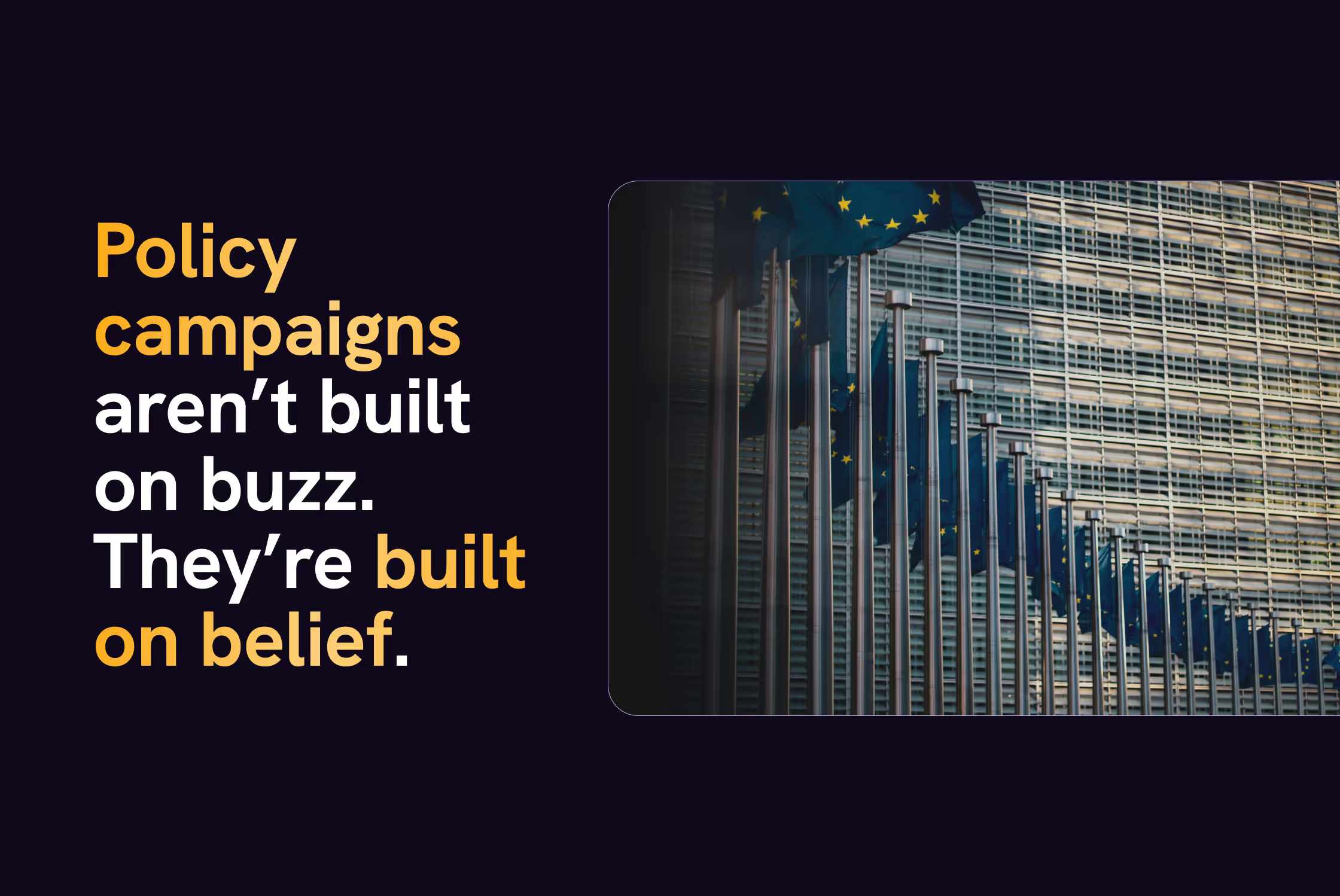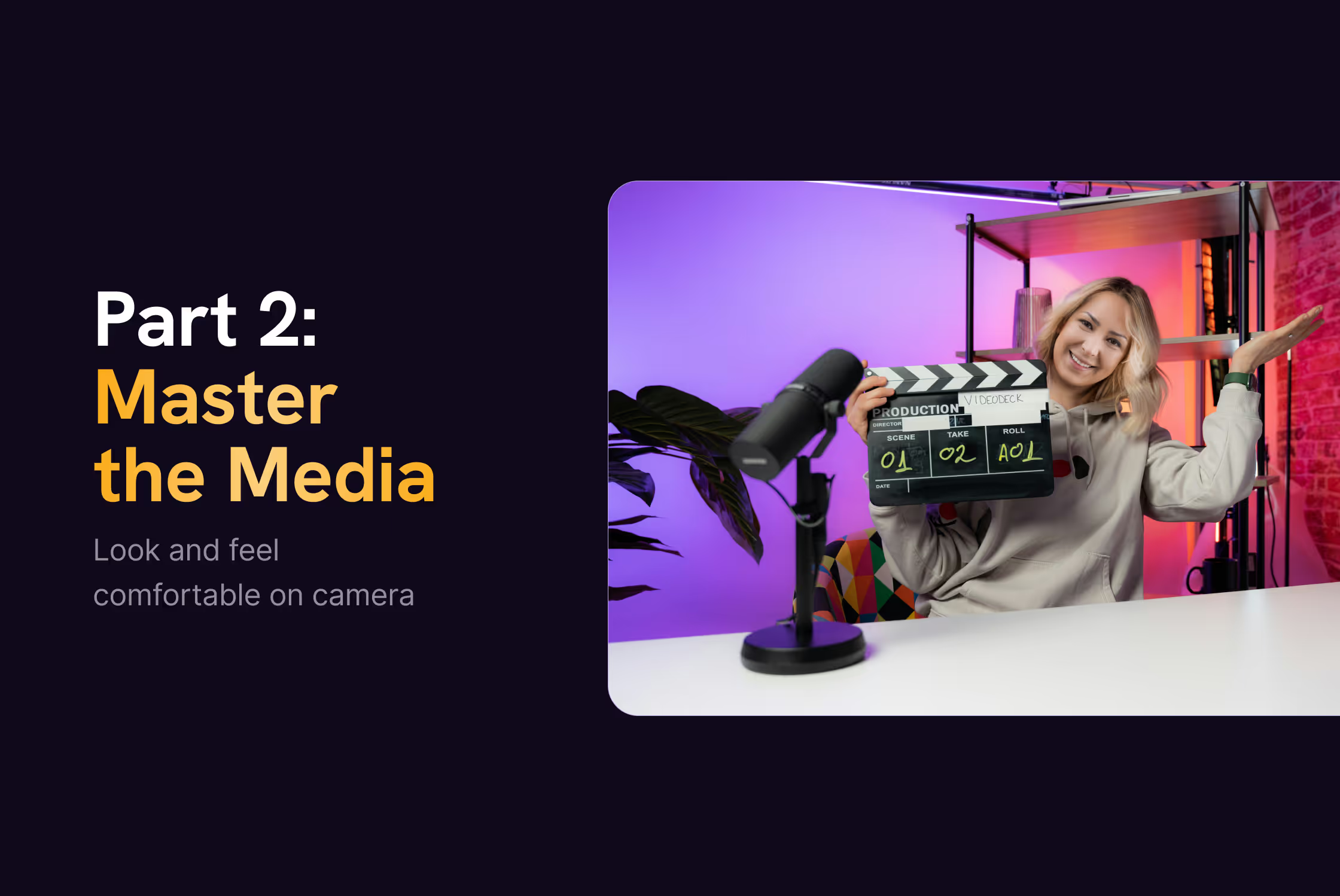What Brands Can Learn from Brussels Policy Communications


When the EU passes sweeping legislation on AI, climate, or digital competition, it rarely happens because someone made an airtight argument. It happens because someone told the right story, in the right way, to the right people.
Policy wins in Brussels aren’t just about white papers. They’re the product of persistent storytelling, strategic framing, and coalition-building. In short: world-class communications.
And yet, many brands often treat storytelling as decoration. Something to add after the “real” strategy is done.
If you're leading brand messaging, campaigns, or content design, look to Brussels. Not because it's trendy. But because the stakes are higher, the audiences tougher, and the room for error razor-thin.
So what can brand strategists learn from the people shaping Europe’s policies?
Let’s break it down.
1. Clear messaging isn’t a style choice
When policymakers vote, they do it under pressure. If your message is even slightly vague, it gets dropped.
Example: The Digital Services Act didn’t make headlines for its policy nuance. It got traction when framed as “accountability for Big Tech.” One repeatable hook that made complexity sound like common sense.
Brand takeaway:
Audit your messaging like a policy advisor would prep a brief:
- Can someone outside your industry repeat it?
- Can it stand up to 30 seconds of attention and zero prior knowledge (or interest)?
- Is it a real narrative or just a slogan in disguise?
If your tagline sounds cool but means nothing, it’s time to rewrite it.
2. Policy campaigns build coalitions, not just reach
EU laws don’t pass because of viral posts or one well-funded campaign.
They pass because coalitions work together. NGOs, trade groups, even influencers. All lending credibility to the same message.
Example: The Right to Repair movement didn’t scale because of one campaign. It grew when consumer rights groups, sustainability startups, and policy actors all rallied around a simple shared story: “You should be able to fix what you own.”
Brand takeaway:
Don’t just chase reach. Build relational influence.
- Who wins if your message spreads?
- Can you turn clients, partners, or creators into advocates?
- Are you inviting others to help shape the story?
In both branding and policy, your biggest asset isn’t your mic. It’s your allies.
3. Emotional framing wins (even in Brussels)
Effective policy messaging isn’t dry. It’s deeply emotional. Even the most technical legislation gets pushed forward by how it feels.
Example: The EU Green Deal wasn’t sold as a list of targets. It was framed as Europe’s moonshot. Bold, generational, and full of possibility. The Right to Repair wasn’t about supply chains. It was about fairness. Autonomy. Waste.
Brand takeaway:
Look at your core message through a human lens:
- What emotion does your product resolve?
- What tension does your brand speak to?
- What future are you inviting your audience to shape?
People don’t rally around data. They rally around meaning.
4. Build narrative infrastructure, not just campaigns
Smart policy communicators don’t reinvent the wheel every time. They build a story system. One that keeps working across months, years, and policy cycles.
Example: The Commission’s use of “digital sovereignty” wasn’t a one-off. It now frames everything from the AI Act to the Data Act. Same storyline. Different tactics.
Brand takeaway:
Use the Map → Frame → Rally approach:
- Map your bigger context
- Frame your central belief or tension
- Rally every touchpoint, from product copy to founder quotes, around it
Without a strong narrative arc, even great content floats away.
5. Smart brands learn from policy’s slow burn
Policy takes time. Years, sometimes. But policy communicators don’t panic. They build influence gradually, with repetition, discipline, and long arcs.
Brands, on the other hand, often give up if a post doesn’t perform in 24 hours.
Brand takeaway:
- Layer your messages like policy advisors layer talking points
- Reuse key ideas in different formats
- Play the long game, not the algorithm
The most influential voices aren’t the loudest. They’re the most consistent.
Final Thought: Don’t just tell stories. Shape context.
In Brussels, storytelling is the strategy. It’s not fluff. It’s how ideas move.
As brand strategists, we often treat storytelling like an afterthought. A way to wrap a CTA in something pretty.
But if your brand wants more than attention. If you want trust, authority, and staying power. Start thinking like a policy communicator.
Not to sound like Brussels. But to sound like you matter.









